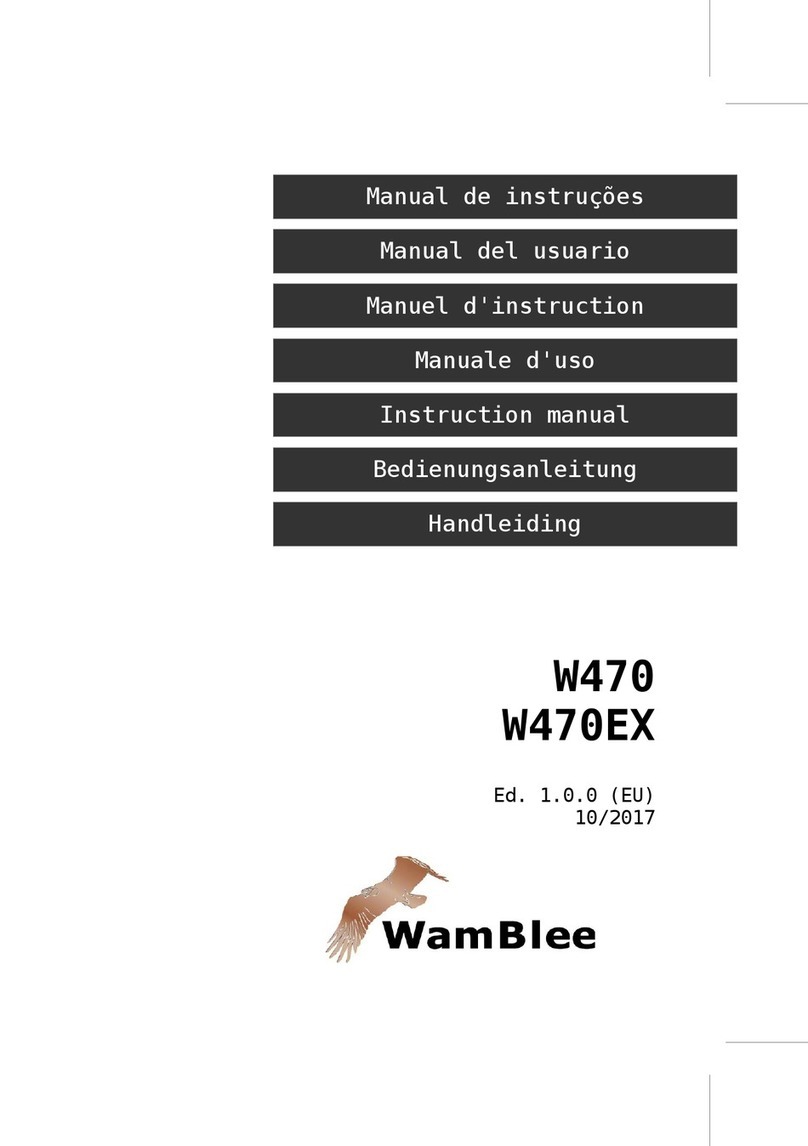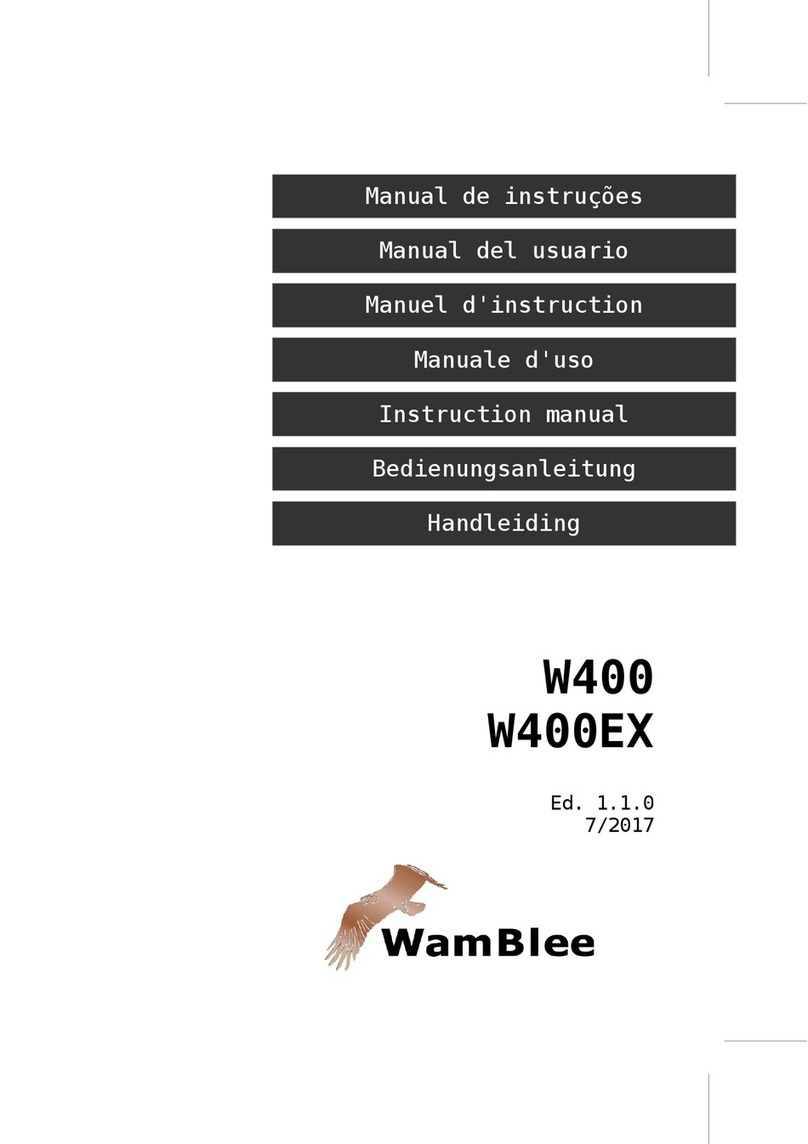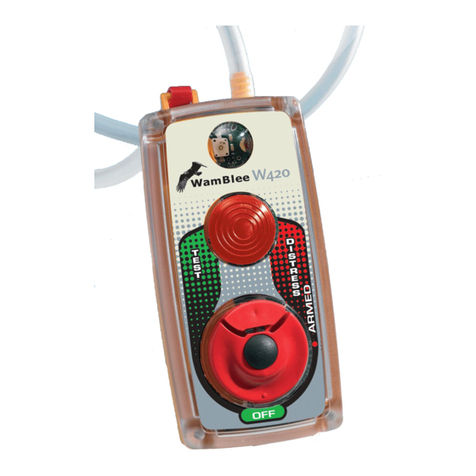Index
1 Introduction........................................................................................................................................5
2 Recommended list of test equipment to service the W400................................................................7
3 To return the W400 M B to Wamblee s.r.l........................................................................................9
4 Verifying W400 M B performance.................................................................................................11
4.1 Verify the test mode functionality.............................................................................................11
4.2 Verify the alarm operation mode (manual activation)..............................................................12
4.3 Verify the alarm operation mode (sea sensor activation)..........................................................13
4.4 Instrumental verification...........................................................................................................14
4.5 Verify the modulation signal.....................................................................................................14
4.6 Verify the beeper loudspeaker...................................................................................................15
4.7 Verify the sea sensor switch......................................................................................................15
4.8 scillator circuit.......................................................................................................................16
4.9 Verify the power amplifier circuit.............................................................................................16
4.10 Power supply circuit...............................................................................................................17
4.11 Microprocessor unit................................................................................................................17
5 Schematic diagrams..........................................................................................................................19
5.1 Introduction...............................................................................................................................19
6 Mechanical diagrams........................................................................................................................29
6.1 Introduction...............................................................................................................................29
6.2 Mechanical components list.....................................................................................................33
7 Instrument waveform pictures..........................................................................................................35
7.1 Introductions.............................................................................................................................35
Pictures
Figure 1: Schematic diagram................................................................................................................21
Figure 2: PCB Layout top view............................................................................................................23
Figure 3: Mechanical layout exploded.................................................................................................31
Figure 4: Modulation signal described in Chapter 4.5.........................................................................35
Figure 5: Beeper tone...........................................................................................................................36
Figure 6: Flash light strobe signal........................................................................................................37
Figure 7: RF emission in TEST mode..................................................................................................38
Figure 8: RF emission in ARMED mode.............................................................................................39
Figure 9: Magnete position for ARMED activation.............................................................................40
Tables
Table 1: Recommended list of test equipment to service the W400 M B............................................7
Table 2: Electronics component list.....................................................................................................27
Table 3: Mechanical component list.....................................................................................................33
3






























